Iran declares ‘Islamic Jihad’ against a new enemy – coronavirus.
BACKGROUND
At the end of December 2019, China reported an outbreak of pneumonia caused by a new coronavirus in Wuhan (Hubei Province). The World Health Organization (WHO) recognized it as an epidemic following a number outbreaks and declared an emergency of international proportions. At first, the disease was called 2019-nCoV; on February 11, 2020, it was named the new coronavirus pneumonia (COVID-2019).
The first wake-up calls for Iran came from social networks when the coronavirus began to spread rapidly in China: parents and relatives of Iranian students sounded the alarm and called the Iranian embassy in Beijing and the Ministry of Foreign Affairs to help to Iranian citizens who were quarantined in Wuhan. The Iranian Foreign Ministry later evacuated its citizens from China in early February.
Iranian chartered flight is implementing the #evacuation operation of 56 Iranians, 59 Iraqis, 24 Syrians & one Lebanese from quarantined #Wuhan, center of #CoronavirusOutbreak.
The flight will take off soon.
All evacuated ones will be quarantined for 2weeks in Tehran and Baghdad. https://t.co/LVpNQiIIWq pic.twitter.com/5QXUfxpEsq— Ali Gholizadeh علی قلیزاده ???????? (@aqolizadeh) February 4, 2020
Despite the WHO’s threats about the speed and scale of the spread of the new virus, Iran did not take urgent and preventive steps at the airports and across the country. Moreover, the Iranian airline company ‘Mahan Air’ continued to regularly operate flights to the virus-infected China with humanitarian aid:
The second shipment of medical supplies, including N95 masks, donated by #Iran, arrived in #China this morning via Mahan Air. China’s fight against #COVID19 is a great contribution to the international community, said the Iranian Embassy in China @IraninChina pic.twitter.com/EXI99eyeXV
— Global Times (@globaltimesnews) February 13, 2020
In addition, in February, a number of public events such as Fajr Week alongside cultural performances including the Fajr International Film Festival were held in Iran with the active participation of a huge number of foreign guests and tourists. On February 11, Iranians celebrated the 41st anniversary of the Islamic Revolution. That day also included mass rallies on the occasion of the 40-day mourning of General Qassem Soleimani. Shortly after that, the week of agitation of candidates for the Islamic Advisory Council in the Iranian parliament began. The election race for candidates demanded meetings with large numbers of voters.
Some Western analysts and mainstream media said that Iran intentionally kept silent about the threat of the coronavirus as it spread throughout the country in order to avoid panic, as they wanted voters to come out for the parliamentary elections.
Nevertheless, in early February, Iranian doctors claimed that there was not a single case of infection of COVID-2019 among foreign tourists in Iran, and that there were only two questionable cases:
#Iran's Minister of Health says two foreign tourists, one from China and one from Germany, are quarantined in Yazd to make sure they don't carry the Coronavirus. They are most probably not infected, he said.https://t.co/c1Kfc7EVz8
— Maziar Motamedi (@MotamediMaziar) January 28, 2020
HOW DID THE VIRUS SPREAD TO IRAN?
The Iranian Ministry of Health reported the first cases of coronavirus in the country only on February 19 when infected people were detected in the Qom province.
However, the first Coronavirus carrier has yet to be found. In that regard, there are two versions about how the disease may have spread to Iran. Given that there are quite a lot of Chinese citizens in Iran, COVID-2019 carriers may have been Chinese nationals working on industrial projects in the Qom province. According to the second version, an Iranian businessmen from Qom who had recently traveled to China was patient-zero.
The information directly affected the turnout in parliamentary elections in Iran.
Iranian member of parliament accuses the health ministry of lack of transparency, says the death toll in Qom is 50.
Iran’s health ministry rebutted the claims, saying the death toll remains 12.
Follow the latest #CoronavirusOutbreak updates: https://t.co/8J9hYM1U5A pic.twitter.com/ZzEB9PtiT8
— Al Jazeera English (@AJEnglish) February 24, 2020
WHY DID COVID-2019 SPREAD SO QUICKLY IN IRAN?
It is worth noting that according to Iranian beliefs and traditions, a proper greeting is not limited to shaking hands, but is accompanied by kissing cheeks. This form of greeting is popular among Iranian women and men, and in particular, among politicians.
In addition to the lack of a quick response of Iranian sanitary services and authorities to the first signals of the coronavirus spread and the lack of mass informing citizens about the seriousness of the problem throughout the country, the special form of Iranian greeting was another factor that may have helped to the rapid infection of coronavirus among Iranians.
Qom is a city of Shiite Muslim pilgrims, where thousands of sick people come to the temple to receive healing by touching the shrine of the Shiite saint Fatima Masumeh. For many Shiites, this is a special sacred ritual. According to information established by Chinese doctors, it is possible for a person to get COVID-19 by touching a surface or object that has the virus on it and then touching their own mouth, nose, or eyes – but this is not thought to be the main way the virus spreads.
Iran has the most advanced medicinal services and professional doctors in the Middle East and West Asia. However, Iran, unlike European countries or Russia, does not have experience in combating an epidemic or pandemic. In Iran, there is no special medical calendar for free vaccination of all citizens against influenza and ARVI. Perhaps this is a fatal flaw for Iranian health care, as timely vaccination around the world has proven efficient against influenza and ARVI.
In Iran, vaccination is carried out strictly on the recommendation of a doctor for high-risk patient groups (such as the elderly, children, patients with cardiovascular diseases, those with breathing problems and patients with weak immune systems). Iran does not have its own vaccines against influenza and ARVI, all vaccines on the recommendation of the WHO are imported from Europe and even Russia. However, US sanctions have highly limited Iran’s ability to buy and import these medicines.
Grateful to @WHO & friendly nations for solidarity in fighting #COVID19—in face of US #EconomicTerrorism, which has endangered Iranian patients.
Urgent need in Iran for:
– N95 Face & 3-Layer Masks
– Ventilators
– Surgical Gowns
– Coronavirus Test Kits
– PPF
– Face/Body Shields— Javad Zarif (@JZarif) March 2, 2020
That’s why Iranian doctors during the first hours of the coronavirus outbreak were not ready and unaware of patients who were sent to hospitals with symptoms of the virus.
Narjes Khanali Zadeh, a 25-year-old nurse from Gilan (N Iran) was the first health professional, who died of #Coronavirus on 18.02.20 in #Iran.
She worked in Milad Hospital, Rasht. #CoronaVirusIran pic.twitter.com/KTXx9kKM6B
— Iran Momentum (@IranMomentum) February 28, 2020
One of the most poignant cases occurred when the Iranian deputy minister of health, Iraj Harirchi, held a large press conference which was attended by the Iranian parliamentarians and representatives of the government and journalists. He read out a report on the situation with the coronavirus. During the conference, the minister seemed quite unhealthy and coughed.
Iran’s deputy health minister, Iraj Harirchi, was pale and drenched in sweat as he told reporters that the Islamic Republic had “almost stabilized” the country’s outbreak of coronavirus. The next day, Harirchi was confirmed as having contracted coronavirus. pic.twitter.com/FCrpwg1jfw
— Vetrissimo (@vetrissimo) March 8, 2020
The next day he was hospitalized and he tested positive for a coronavirus. The deputy minister announced his condition in a video-message on social media.
Sending prayers to #Iran and the swift recovery of #IrajHarirchi.???? Religious and political differences aside we are all in this together???? https://t.co/gOA3YZCv3t
— Adie Muller (@Adie3Mu) March 1, 2020
After this incident, Iranian authorities took the threat of the coronavirus outbreak more seriously, as a number of important politicians and religious figures were infected, one of whom died as a result.
The spread of #coronavirus among Iranian officials is just shocking. At least 3 have died, more than two dozens have been infected. https://t.co/b3JM3kEw2k
— Golnaz Esfandiari (@GEsfandiari) March 5, 2020
The Vice-Speaker of the Iranian parliament Abdolreza Mesri said that 23 deputies of the Iranian parliament tested positive for coronavirus.
Iranian President Hassan Rouhani said that diseases caused by the new coronavirus have been spread absolutely to all provinces of the country.
SURPRISED IRAJ HARIRCHI NOT EXECUTED BY THE GOVERMENT YET.pic.twitter.com/qQ9NtSUAUN
— INVESTMENT HULK (@INVESTMENTSHULK) March 6, 2020
According to the Iranian Ministry of Health, on March 10, Tehran (2114 total confirmed case of infections) leads in the number of infected provinces, followed by Qom (751), Mazenderan (886), Gilan (524) and Isfahan (618).
Despite the relatively high mortality rate in Iran compared with other countries infected with coronavirus, one resonant positive case occurred in the Islamic Republic. A healthy baby was born from a woman infected with COVID-2019.
The first #corona baby of the world: born in the hospital in north of #Iran, Babol city. mother was affected by #Coronavid19 . fortunately new born baby is not affected. #CoronaVirusUpdate #COVIDー19 pic.twitter.com/EDEkOO8SSo
— Man_human (@Manhuman6) March 1, 2020
However, Iranian doctors and even Red Crescent employees have been in a risk patient group.
The head of Iran’s emergency medical services, Pirhossein Kolivand, has also conducted coronavirus.
Pirhossein Kolivand, the head of #Iran's emergency medical services, is "being treated" for #Covid_19. https://t.co/oudHeKt52o
— Kian Sharifi (@KianSharifi) March 3, 2020
Another person who was infected with COVID-2019 is Mujtaba Akbari, the head of the Red Crescent Society division in the Mazandaran province
Посмотреть эту публикацию в Instagram
IS THE USA RESPONSIBLE FOR THE CORONAVIRUS EPIDEMIC IN IRAN?
US President Donald Trump and his policy of sanctions against Iran are partly responsible for spread of the coronavirus in Iran. This statement was made by the adviser to the Iranian president, Hesameddin Ashna.
.@realDonaldTrump’s economic sanctions, and Europe’s complicity, left Iran’s public health infrastructure underprepared to deal with coronavirus in a timely way. Trump’s policies are partly responsible for shaping the spread of this virus, and the lives lost in the process.
— حسام الدین آشنا Hosamoddin Ashena (@hesamodin1) February 29, 2020
“Trump’s economic sanctions, and Europe’s complicity, left Iran’s public health infrastructure underprepared to deal with coronavirus in a timely way. Trump’s policies are partly responsible for shaping the spread of this virus, and the lives lost in the process”, Hesameddin Ashena wrote on Twitter.
According to Ashena, the responsibility for the outbreak and the death of Iranian citizens from COVID-19 “partly lies with Trump’s policy.”
COVID-19 is international & circulates globally. The irony of .@realdonaldTrump’s sanctions, which have ravaged Iran’s public health infrastructure, is that it torpedoed the virus to America. Sanctions need to be lifted to help contain a global problem- no more clowning around!
— حسام الدین آشنا Hosamoddin Ashena (@hesamodin1) March 2, 2020
The Iranian Foreign Minister, Mohammad Javad Zarif, also laid blame on the United States, calling US sanctions medical terrorism:
.@realDonaldTrump is maliciously tightening US' illegal sanctions with aim of draining Iran's resources needed in the fight against #COVID19—while our citizens are dying from it.
The world can no longer be silent as US #EconomicTerrorism is supplanted by its #MedicalTerrorism.
— Javad Zarif (@JZarif) March 7, 2020
The position of the Iranian authorities is quite understandable. As a result of the sanctions, Iran has been deprived of the opportunity to buy a number of vital medicines from Europe, the US and other countries. Iran has also had a lot of problems receiving humanitarian aid for victims of the earthquakes in Kermanshah and the floods in the Sistan province.
Although the US has clearly been involved in the spread of coronavirus in a secondary way, there is also a more conspiratorial point of view which suggests direct involvement. The United States has gone through great pains to weaken its main opponents, China and Iran, which is why Iranian military officials believe that coronavirus was created as a biological weapon and intentionally spread to these countries.
Hussein Salam, commender in chief of the #IRGC claims that the corona Virus is a biological weapon the US used to attack China then Iran. #biowarfare #coronavirus https://t.co/L13CdellDx
— Anas Elallame (@AllamNaz) March 6, 2020
It is still very difficult to refute or confirm this accusation, but there are certainly enough reasons for US globalist structures to take such serious measures in their attacks on the economies of Iran and China.
GLOBAL REACTION
Iran is the third country in the world where the coronavirus situation has begun to look like an epidemic. In a number of neighboring countries, Iranian citizens or those who visited Iran have tested positive for coronavirus.
As a result, a number of neighboring countries (Turkey, Armenia, Turkmenistan, Azerbaijan, Iraq, Pakistan, India and Afghanistan) have closed their borders with Iran, and many other states have canceled flights to and from Iran.
Russia suspends visas for Iranians following #CoronaVirus outbreak across Iran. Previously, Iran's neighboring countries, including Turkey, Iraq, Afghanistan, UAE, Kuwait, Pakistan, Armenia, and Turkmenistan, closed borders until further notice. pic.twitter.com/KElnOZ52Pe
— Farashgard Foundation (@FarashgardFdn) February 26, 2020
Russia, Armenia and Iraq imposed a ban on issuing visas and invitations to Iranian citizens, as well as a ban on entry into their countries for all Iranians and foreigners from Iran.
#Iraq cancels precious decision to scrap visa for Iranian nationals as of February 25 for 3 months. The embassy in Tehran is closed for now and no one is granted visa. #coronavirus #Iran https://t.co/NtLgVDaRVp
— Fereshteh Sadeghi فرشته صادقی (@fresh_sadegh) March 7, 2020
Armenia to temporarily suspend visa-free travel for Iranians over coronavirus – PM @NikolPashinyan#Iran #Armenia #CoronaVirusIran #COVID19 https://t.co/yvrk6It5ok
— Iran's Today (@Iran) March 2, 2020
China was the first country to come forward and offer help to the embattled nation.
China delivers first batch of medical supplies to #Iran:
Five thousand test kits have been delivered, along with 250,000 masks. And four disease control experts from China have been sent to Iran to help. #COVID19 #coronavirus pic.twitter.com/BLyYsH0Wxy
— CGTN (@CGTNOfficial) February 29, 2020
#Iran ambassador to #China in a tweet announced that first shipment of Chinese aid for combating #Coronavirus sent to the country in response to Iranian’s nation solidarity with people of China https://t.co/CWO707Vvq7
— Iran's Today (@Iran) February 27, 2020
The Chinese embassy in conjunction with Chinese companies came together to gift Iran 5,000 coronavirus test kits. China’s Ambassador to Iran, Chang Hua, wrote on his Twitter account that “efforts will continue.”
More aid from China will arrive soon @JZarif https://t.co/Q326yetOvZ
— Chang Hua (@AmbChangHua) March 3, 2020
Iran is facing serious problems in terms of distributing the necessary medical supplies to stop the spread of coronavirus.
#Iran's #COVID19 outbreak:
Semi-official Hamshahri Online website: 61% of Tehran residents want the capital to be quarantined. 63% don't have enough access to masks & disinfectants from which 74% say the shortage comes from the markets. 22% say they can't afford it. pic.twitter.com/b9tYFtQPmP— Iran News Wire (@IranNW) March 7, 2020
The WHO also responded to Zarif’s call to provide to help Iran in the fighting against coronavirus:
https://twitter.com/Globalpoliticss/status/1234641287514673153?s=20
On March 2, the WHO sent an aircraft carrying tons of medical supplies and test kits along with a medical team to Iran in order to help combat the novel coronavirus.
The supplies, worth over $300,000, consisted of gloves, surgical masks and respirators.
The chartered flight from our @WHO logistics hub in #Dubai ???????? has landed in Tehran, #Iran, carrying our staff and medical supplies. This shipment will help #Iran to respond faster to #coronavirus. I thank Crown Prince Sheikh Mohammed bin Zayed Al Nahyan and UAE for this support pic.twitter.com/Ateit9crI6
— Tedros Adhanom Ghebreyesus (@DrTedros) March 2, 2020
Russia also came forward to help Iran in the fighting against coronavirus, sending surgical masks, gowns and respirators.
Vladimir Putin offered his condolences to @HassanRouhani over the coronavirus outbreak victims in #Iran???????? and expressed readiness to render help in curbing the spread of the infection. The presidents touched upon some items on the bilateral agenda. pic.twitter.com/GFajuKrVbK
— Russian Embassy in USA ???????? (@RusEmbUSA) March 1, 2020
Iran’s neighbor Pakistan made efforts to help deal with the trade and food problem in Iran, opening its borders for food trucks:
Taftan ????????????????#PakIranTrade: health teams deputed at entry points have screened the Iranian drivers amid #cornoravirus outbreak https://t.co/4z0MvbkOaq
— Radio Pakistan (@RadioPakistan) March 8, 2020
Pakistan reopened borders with Iran for trade activities, 14 days after it was shut following a spike in cases of COVID-19 in the country.
Read @zafarbaloch's reporthttps://t.co/oKUeGhbBRB
— The Express Tribune (@etribune) March 8, 2020
US Senator Elizabeth Warren demanded that the State Department and Treasury Department investigate lifting sanctions on medical supplies to Iran:
Iran has the most coronavirus deaths outside China. Although US sanctions exempt humanitarian items, I’m concerned that in practice sanctions may be limiting access to basic medical supplies to help the Iranian people. I want info from @USTreasury & @StateDept. pic.twitter.com/TEDSL1PMKV
— Elizabeth Warren (@SenWarren) February 28, 2020
US Special Representative for Iran Brian Hook also offered to send medicines through a Swiss channel.
As Iran faces a deadly outbreak of coronavirus, US Special Representative for Iran Brian Hook says Washington is ‘actively working’ on ways to help the Iranian people.
Watch the full interview: https://t.co/dCWFPzVgbc pic.twitter.com/3cynTROnRV
— TRT World (@trtworld) March 1, 2020
However, the Iranian authorities did not accept this proposal:
Iran's President Hassan #Rouhani has dismissed a US offer to help the Islamic republic fight its #coronavirus outbreak, charging that "vicious" American sanctions are depriving the country of medicine pic.twitter.com/L7hTcq2T5j
— New TR News Agency (@NewTRNewsAgency) March 4, 2020
WHAT HAS IRAN DONE TO COMBAT THE SPREAD OF THE VIRUS?
Iran has finally taken radical preventive steps to combat the coronavirus. The authorities have even quarantined some cities. Mass disinfection of public transport and medical facilities has begun, and a number of sport events, including football qualifying matches, have been canceled. Kindergartens, schools and universities, even mosques in several cities were quarantined until the “new year” (Nowruz) which begins in Iran on March 21. Citizens are strongly advised not to travel to the provinces.
The Plan and Budget Organization of Iran has allocated 5.5 trillion rials (nearly $170 million) more to the Ministry of Health in order to counter COVID-19.
At airports, passenger checks and sanitary measures have been strengthened.
We're closely engaged w/ @WHO to battle #COVID19 in Iran & ensure proper care for those infected
Strict preventive measures—including screening of air travelers at departure gates—are being implemented
Global & regional coop imperative. We either win together or lose together. https://t.co/60wJw7ucdE pic.twitter.com/YMuiSHoizC
— Javad Zarif (@JZarif) March 5, 2020
Iran’s Supreme leader, Ayatollah Ali Khamenei, called on all Iranians to mobilize into a united front and declare Islamic jihad against the coronavirus.
Iran leader @khamenei_ir calls the struggle against #coronavirus a #Jihad for the sake of God. https://t.co/M13BEsZ4VE
— PressTV Programs (@PressTVPrograms) March 3, 2020
In practice, Ayatollah Khamenei instructed Iranian citizens to comply with instructions from the WHO and to mobilize forces against the spread of the virus.
#Iran opening 14 new hospitals amid #coronavirus surge #IranFightsCorona #Covid19https://t.co/j2jPpovpOM
— Press TV ???? (@PressTV) March 5, 2020
In addition, the IRGC has gotten involved with the fight against coronavirus.
IRGC Health official: IRGC is ready to help combat in Coronavirus issue https://t.co/es35pKtoyE
— urmedium.com (@Urmediumcom) March 1, 2020
Iranian doctors and nurses, who are in a special risk patient group, have been actively trying to prop up morale on social media networks in order to stop panic among the population. They have been posting various funny videos including dances in their medical gear.
Another dance video out of #Iran’s hospitals battling #coronavirus.
“Dance, when you're broken open. Dance, if you've torn the bandage off. Dance in the middle of the fighting. Dance in your blood. Dance when you're perfectly free.” Rumi pic.twitter.com/iQvV5d8eal— Ali Arouzi (@aliarouzi) March 6, 2020
DAMAGE FROM THE CORONAVIRUS
The virus has become a ticking time-bomb for Iran. US economic sanctions did damage over time, but coronavirus has acted swiftly and without remorse. In addition to the human losses, all sectors of the Iranian economy have suffered from the coronavirus.
For instance, the tourism industry and international passenger airlines have been heavily hit.
What's the impact of coronavirus on Iran's economy? Tehran-based journalist Reza Hatemi weighs in pic.twitter.com/47OBFCg7iu
— TRT World Now (@TRTWorldNow) March 8, 2020
Both the agricultural and food sectors of the Iranian economy have suffered. Coronavirus has deeply affected the export of food products, as well as the import of Indian rice into Iran.
Coronavirus in Iran causes losses to Indian basmati rice exports, domestic prices fall https://t.co/YySVl3JTwF pic.twitter.com/YO8cRI7rAd
— Technology Shout (@tech_shout) February 29, 2020
Borders are closed and there are no deliveries with major Iranian trading partners:
#Iraq will stop border trade with #Iran and #Kuwait from March 8-15 as part of its efforts to limit the spread of the #coronavirus.https://t.co/pMZ5wD2Hlq
— Al Arabiya English (@AlArabiya_Eng) March 6, 2020
Cases of theft and hiding of vital products and medical supplies have become more frequent.
Ten individuals charged with hoarding health supplies and disrupting #Iran’s economy stand trial on Saturday as these products are scarce in the country due to the outbreak of the new coronavirus, known as #COVID19 https://t.co/ppqMYj0Djs pic.twitter.com/KEjoz773ey
— Tasnim News Agency (@Tasnimnews_EN) March 7, 2020
In fact, Iran’s trade with a number of countries is now paralyzed. Damage will be measured in the millions and maybe billions of dollars.
Iran, due to the lack of the necessary number of medical personnel and the interruption or lack of food supplies in prisons, has taken extreme measures: Iranian officials released about 70,000 prisoners in the face of the threat of coronavirus.
FORECAST
- If international organizations, the WHO in particular, alongside individual countries, do not intervene by sending necessary medicine supplies and specialists to Iran, the coronavirus outbreak in this country will turn into a pandemic. This may be followed by a humanitarian catastrophe, in particular if globalist structures do not revise their sanctions policy, as a result of which Iran has limited access to advanced medicines and technologies needed to fight COVID-2019.
- According to statistics, coronavirus mortality rates in Iran are higher than in China or Italy. It’s clear that Iran needs help not only with medicines, but with international scientific research experience of experts and in the investigation of the causes and growth factors of COVID-2019 spreading, analyzing and correcting of the methodology for treating patients with coronavirus in Iran.
- In addition, under adverse economic conditions including high inflation and the economic blockade, the country is facing unemployment, poverty and hunger. Accordingly, the general mortality among the Iranian population is likely to increase as well.





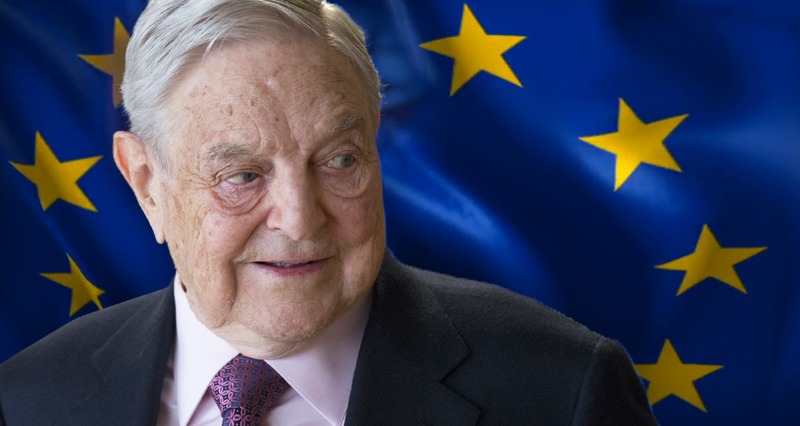

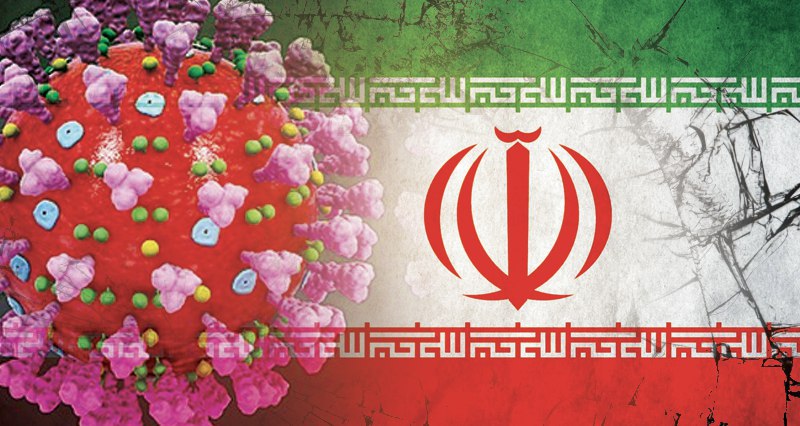


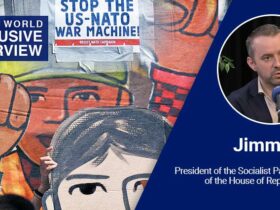
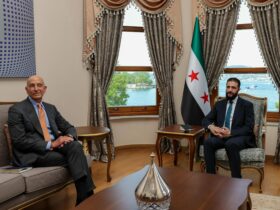
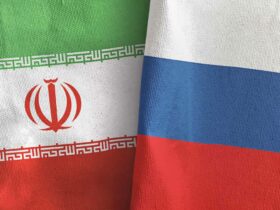

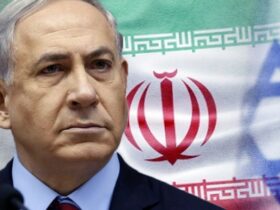
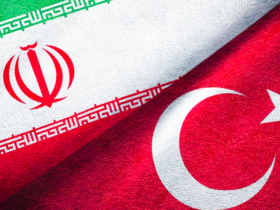

Leave a Reply